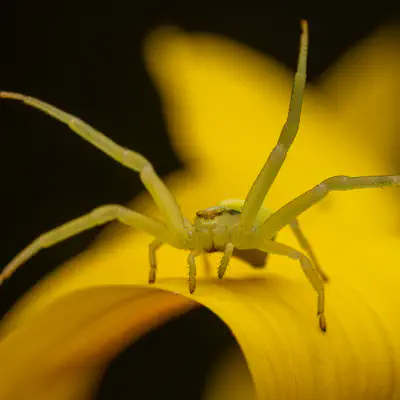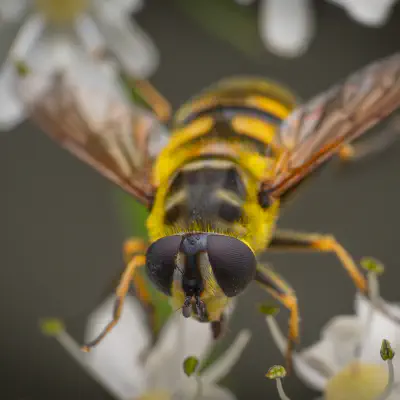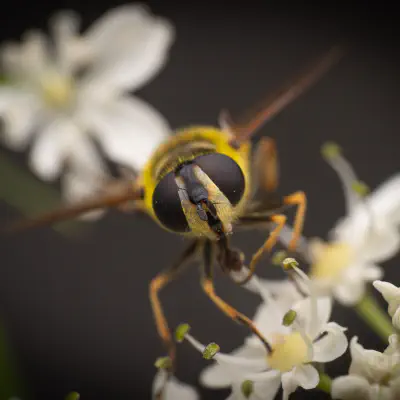For terms see Morphology of Diptera The species has a wing length of 7–12 mm (0.3–0.5 in). Thorax dorsum with a characteristic "skull" black pattern. Abdomen black with yellow patterning. Legs pale and black. The larvae of the species were described and figured by Graham E. Rotheray in 1993. See references for determination.
Yellow-haired Sun Fly (lat. Myathropa florea)
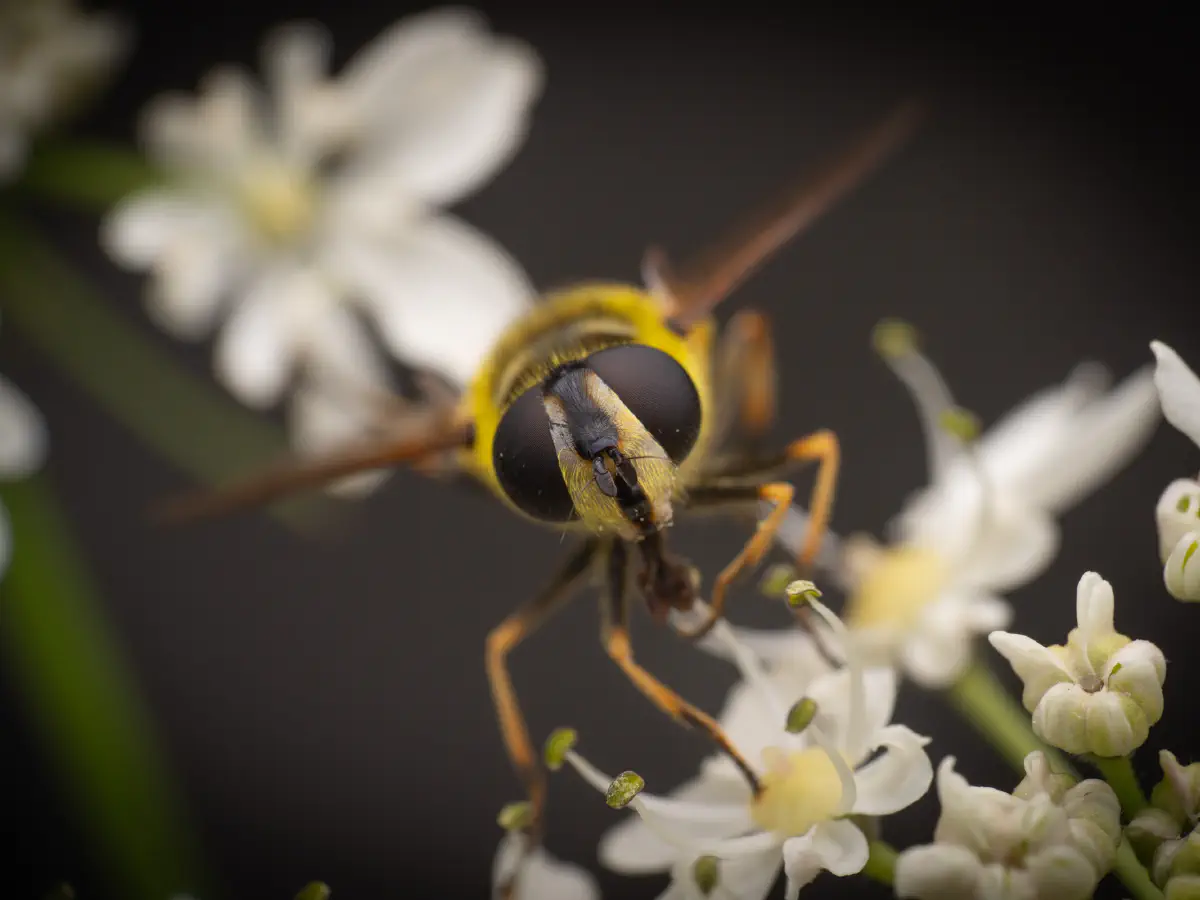
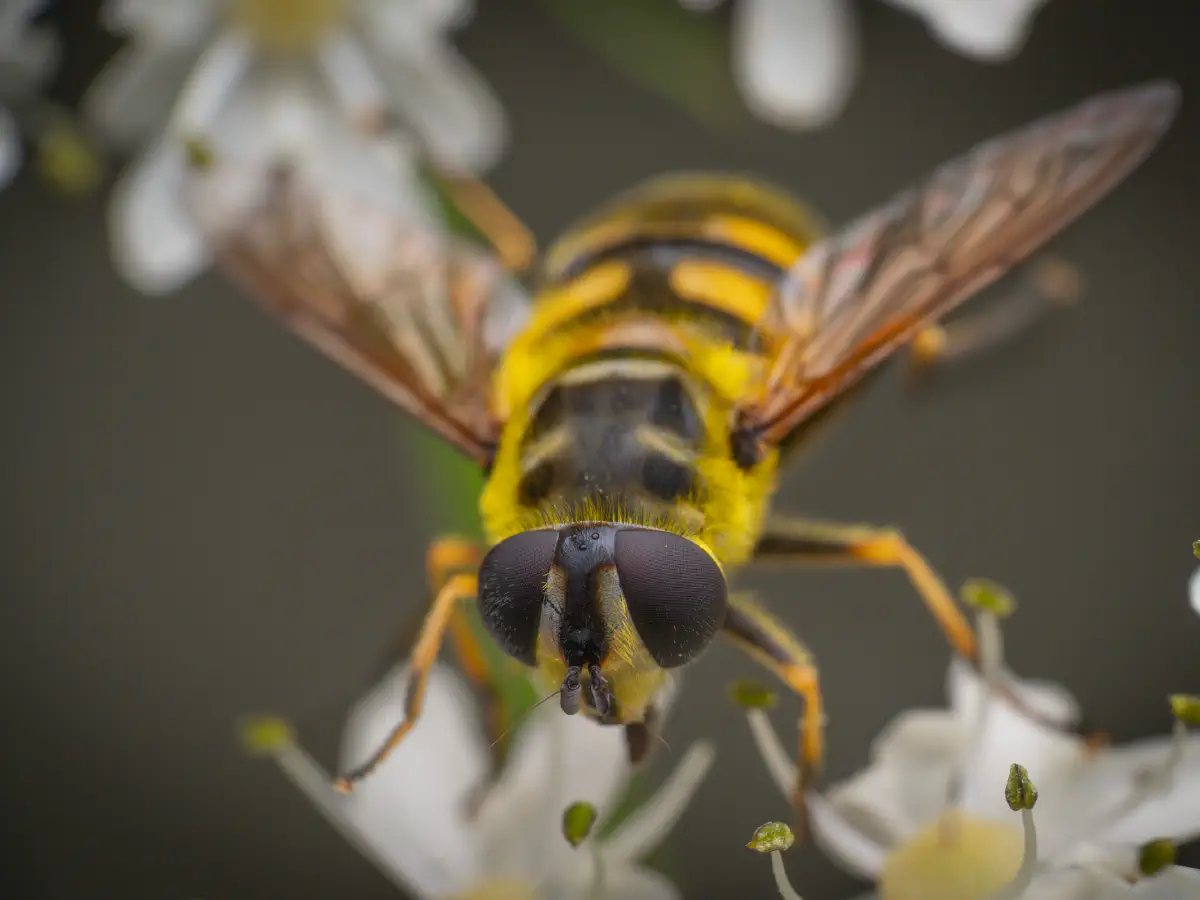


This is not intended to be a dry lexicon. Personal stories and sensitive articles form the framework for our pictures: „Explained as easy as pie — Why small creatures have big differences“
This article is about the evolutionary adaptation that has led to the impressive diversity of arthropods — including insects, crustaceans, and arachnids.
